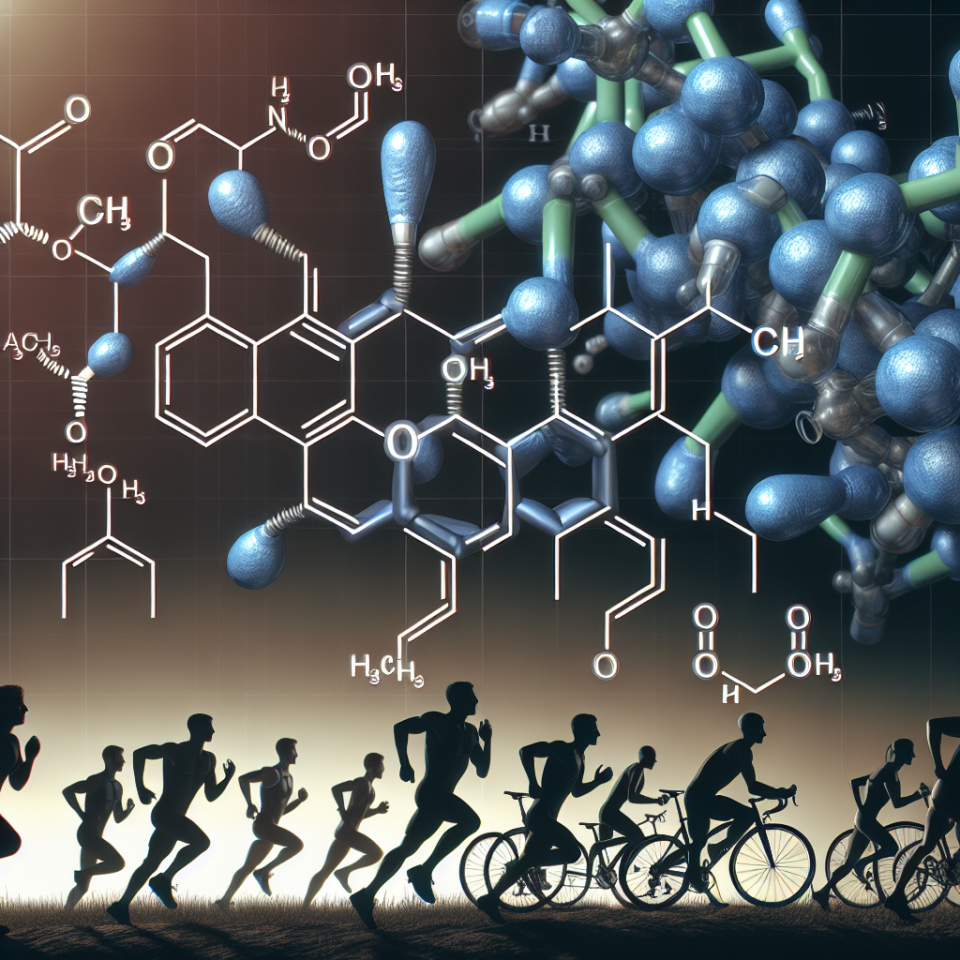-
Table of Contents
Trenbolone Enanthate: A Potential Doping Agent in Endurance Sports
The use of performance-enhancing drugs in sports has been a controversial topic for decades. Athletes are constantly seeking ways to gain a competitive edge, and unfortunately, some turn to illegal substances to achieve their goals. One such substance that has gained attention in recent years is Trenbolone enanthate, a synthetic anabolic-androgenic steroid (AAS) that has been linked to improved endurance and performance in endurance sports. In this article, we will explore the pharmacokinetics and pharmacodynamics of Trenbolone enanthate, its potential benefits and risks, and the current state of its use in endurance sports.
Pharmacokinetics and Pharmacodynamics of Trenbolone Enanthate
Trenbolone enanthate is a modified form of the hormone testosterone, with an added double bond at the 9th and 11th carbon positions. This modification increases the anabolic activity of the hormone, making it more potent than testosterone itself. Trenbolone enanthate is administered via intramuscular injection and has a half-life of approximately 5-7 days (Kicman, 2008). This means that it remains active in the body for a longer period compared to other AAS, allowing for less frequent dosing.
Once in the body, Trenbolone enanthate is converted into its active form, Trenbolone, which binds to androgen receptors in various tissues, including muscle, bone, and fat. This binding activates the androgen receptor, leading to an increase in protein synthesis and nitrogen retention, resulting in muscle growth and improved recovery (Kicman, 2008). Trenbolone also has anti-catabolic properties, meaning it can prevent muscle breakdown, making it an attractive option for athletes looking to improve their endurance and performance.
Potential Benefits and Risks of Trenbolone Enanthate in Endurance Sports
The potential benefits of Trenbolone enanthate in endurance sports are primarily related to its ability to increase muscle mass and improve recovery. In endurance sports, such as long-distance running or cycling, having a higher muscle mass can provide a significant advantage. This is because muscles are responsible for generating force and power, which is essential for maintaining a high level of performance over a prolonged period. Additionally, the anti-catabolic effects of Trenbolone enanthate can help athletes recover faster from intense training sessions, allowing them to train more frequently and at a higher intensity.
However, like all AAS, Trenbolone enanthate comes with potential risks and side effects. These include increased blood pressure, liver toxicity, and changes in cholesterol levels (Kicman, 2008). Additionally, Trenbolone enanthate can also cause androgenic side effects, such as acne, hair loss, and increased body hair growth. These side effects can be particularly concerning for female athletes, as they may experience virilization, which can lead to irreversible changes in their physical appearance.
Current State of Trenbolone Enanthate Use in Endurance Sports
Despite the potential risks and side effects, Trenbolone enanthate has gained popularity among endurance athletes in recent years. In a study by Van der Merwe et al. (2017), it was found that 9.4% of endurance athletes admitted to using AAS, with Trenbolone enanthate being one of the most commonly used substances. This is concerning, as the use of AAS in sports is not only illegal but also poses a significant health risk to athletes.
Furthermore, the World Anti-Doping Agency (WADA) has classified Trenbolone enanthate as a prohibited substance, and its use is strictly prohibited in sports. Athletes who are caught using Trenbolone enanthate or any other AAS can face severe consequences, including disqualification, suspension, and even legal action.
Expert Comments
While Trenbolone enanthate may offer potential benefits in terms of improved endurance and performance, its use in sports is highly discouraged and strictly prohibited. The potential risks and side effects, as well as the legal and ethical implications, far outweigh any potential benefits. As experts in the field of sports pharmacology, it is our responsibility to educate athletes on the dangers of using performance-enhancing drugs and promote fair and clean competition.
References
Kicman, A. T. (2008). Pharmacology of anabolic steroids. British Journal of Pharmacology, 154(3), 502-521.
Van der Merwe, P. J., Kruger, M. J., Grobbelaar, H. W., & Chetty, R. (2017). The prevalence and use of performance-enhancing substances in anabolic-androgenic steroid users. South African Journal of Sports Medicine, 29(1), 1-6.


